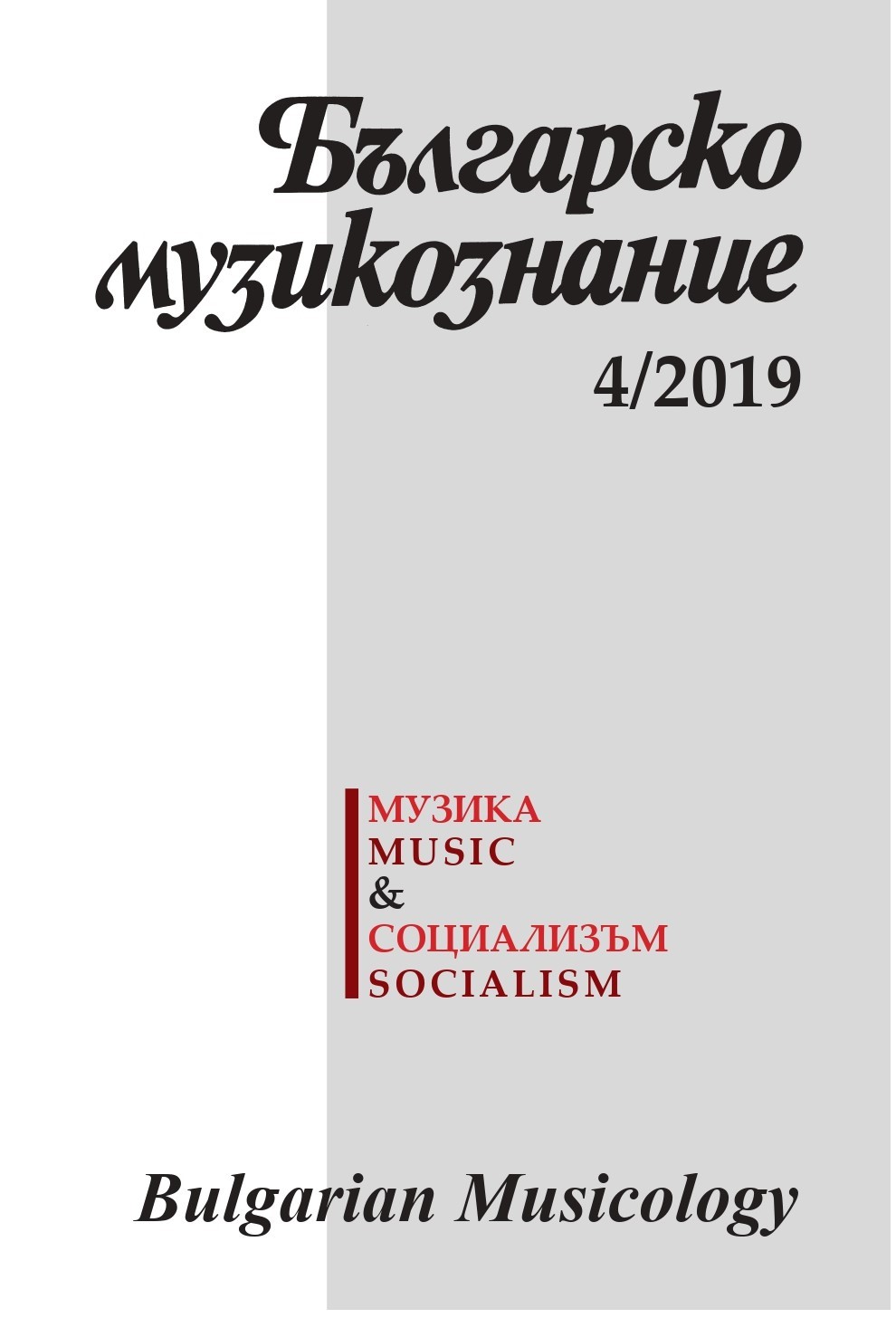Държавният ансамбъл за народни песни и танци, композиторите, властта и самодейността през 1952
The National Ensemble of Folk Songs and Dances, Composers, Authorities and Amateur Music Activities in 1952
Author(s): Goritza Naydenova, Goritza NaydenovaSubject(s): History, Theatre, Dance, Performing Arts, Fine Arts / Performing Arts, Recent History (1900 till today), History of Art
Published by: Институт за изследване на изкуствата, Българска академия на науките
Summary/Abstract: The article draws on the shorthand report of a discussion about the earliest presentation of the National Ensemble of Folk Songs and Dances (NEFSD) at the Union of Composers, Musicologists and Concert Performers (UCMCP) on 6 February 1952, as well as on the press reviews of the same year. Drawing on the principle terms of sociological new institutionalism, the article offers the complicated picture of a dialogue between the institutions, persons and socialist authorities. A tangle of miscellaneous problems is unveiled in regard to the state of affairs in the musical culture of that period, the power mechanisms used to enforce certain trends in culture, and the personal strategies for ‘manipulating’ the authorities. The stand of UCMCP, as an institution, is one of reserved distance. According to the authorities, NEFSD was formed to comply with the Zhdanov Decree against musical formalism and its main task was ‘to bring composers closer to the people’ (which UCMCP failed to achieve through mass songs). What the authorities expected from the NFE was first, to set an edifying example to the UCMCP for their insufficient denouncement of formalism and second, to influence rural amateur art activities (villages required particular attention due to the difficulties in imposing political and economic changes). Philip Koutev believed that composers ought to get closer to folk music (a line coming from the pre-socialist period). He also addressed the Ensemble’s influence on rural amateur art activities but with a different goal: folk music ought to be rescued from mass songs rather than using it to make them better. In Philip Koutev’s opinion, NEFSD was an attempt to reorient the cultural policy of that period in a better direction. Such a ‘manipulation’ of the authorities was also a strategy of the leaders of musical life in the civilizational project, who sought to create a network of music institutions. In this context, as far as the composers under consideration are concerned, the interpretation of the new phenomenon of NEFSD is only possible by using West-European aesthetic and technological standards. It left its mark on the NEFSD’s development and the ensuing trend.
Journal: Българско музикознание
- Issue Year: 2019
- Issue No: 4
- Page Range: 27-47
- Page Count: 21
- Language: English, Bulgarian
- Content File-PDF

